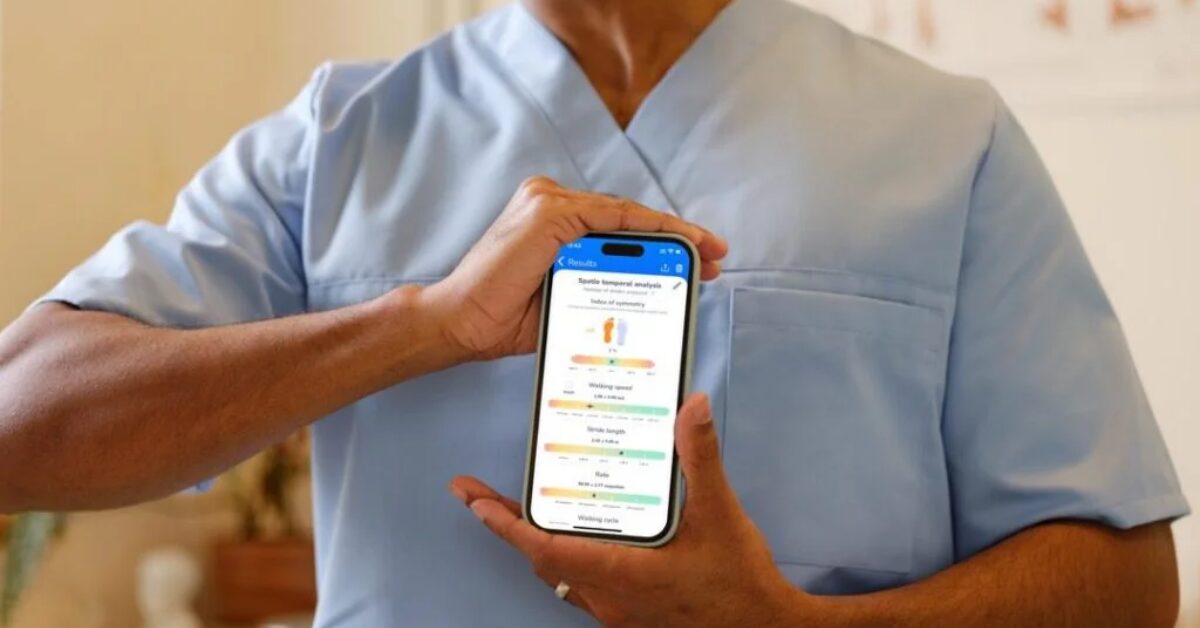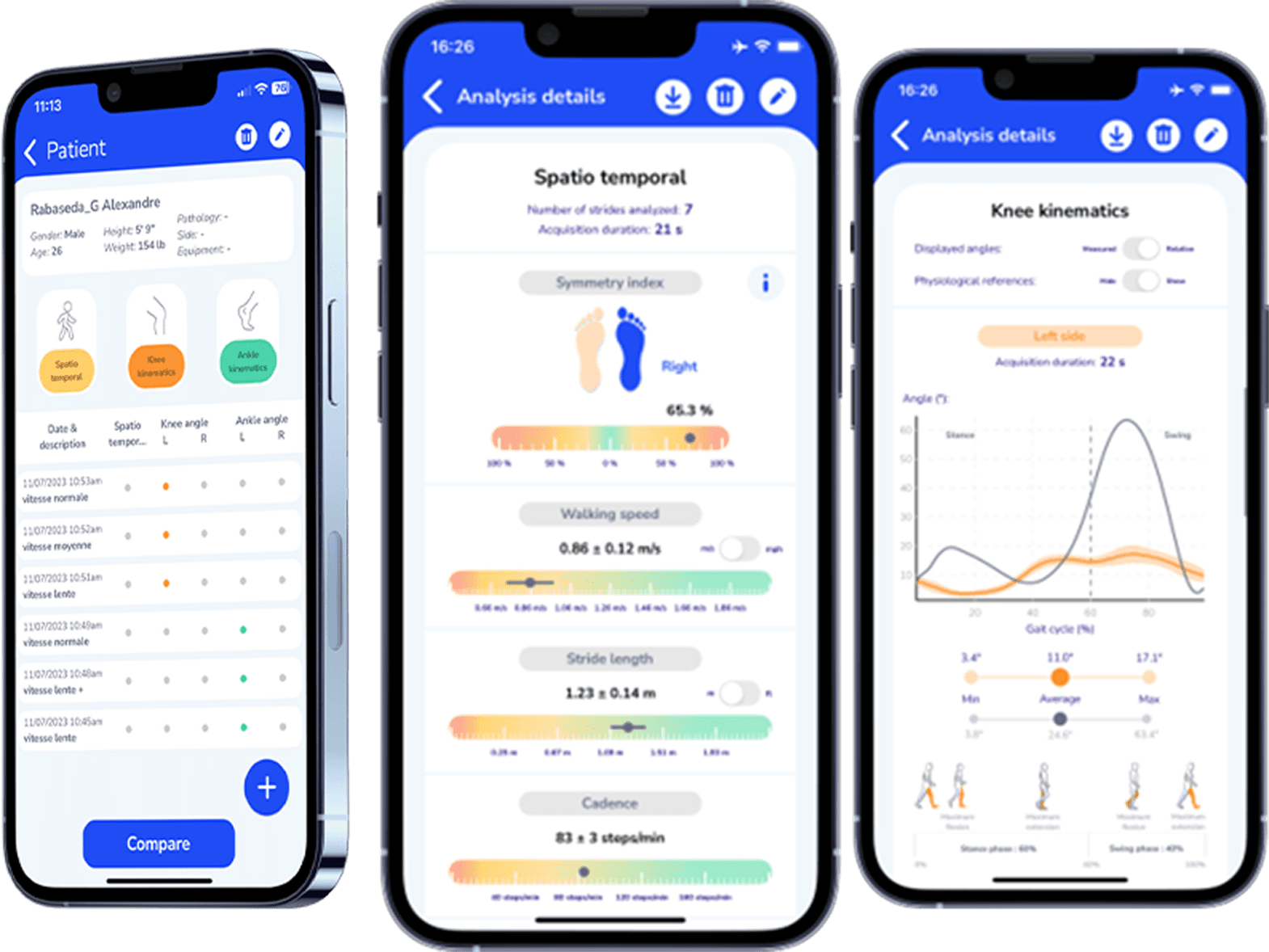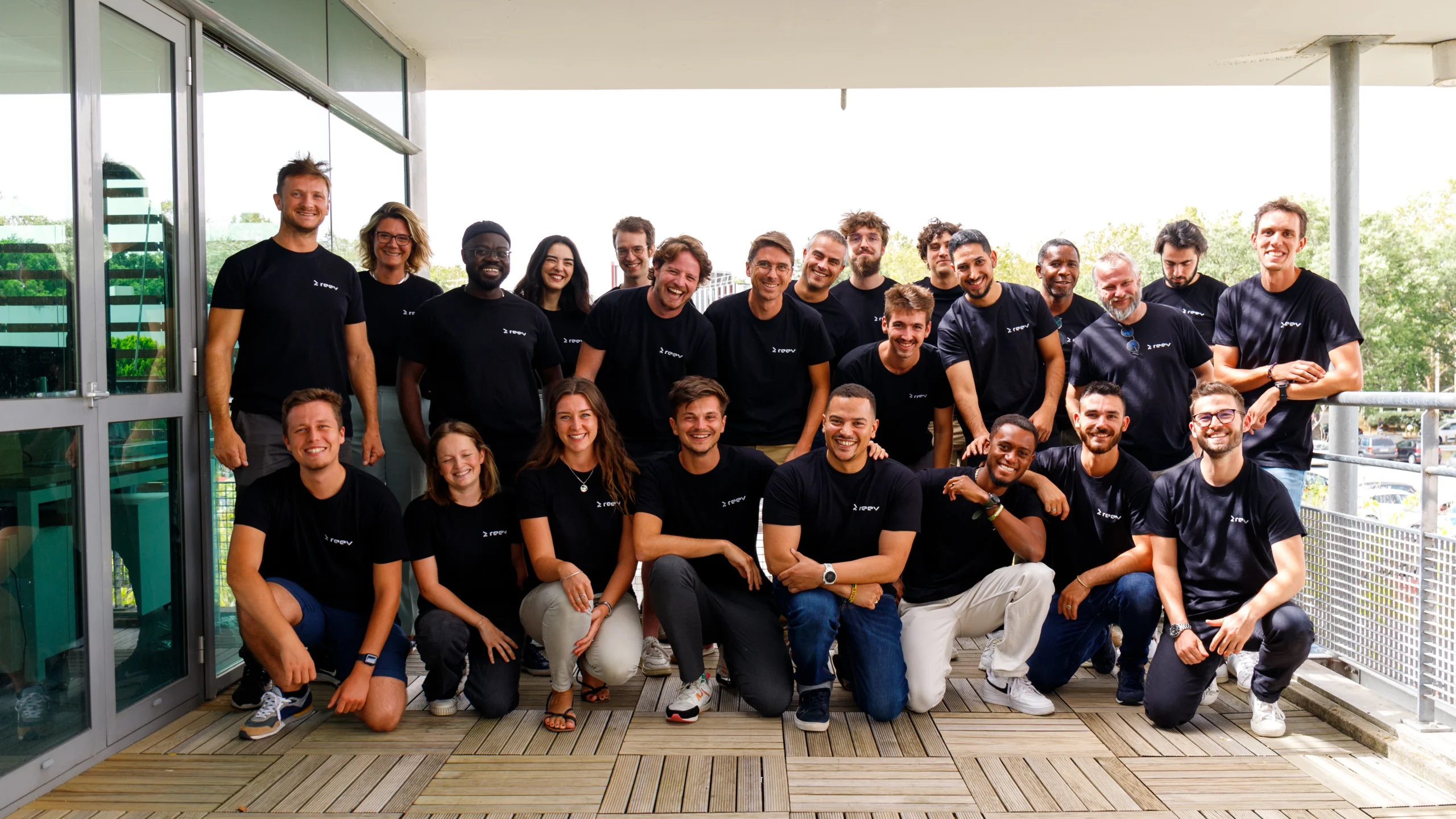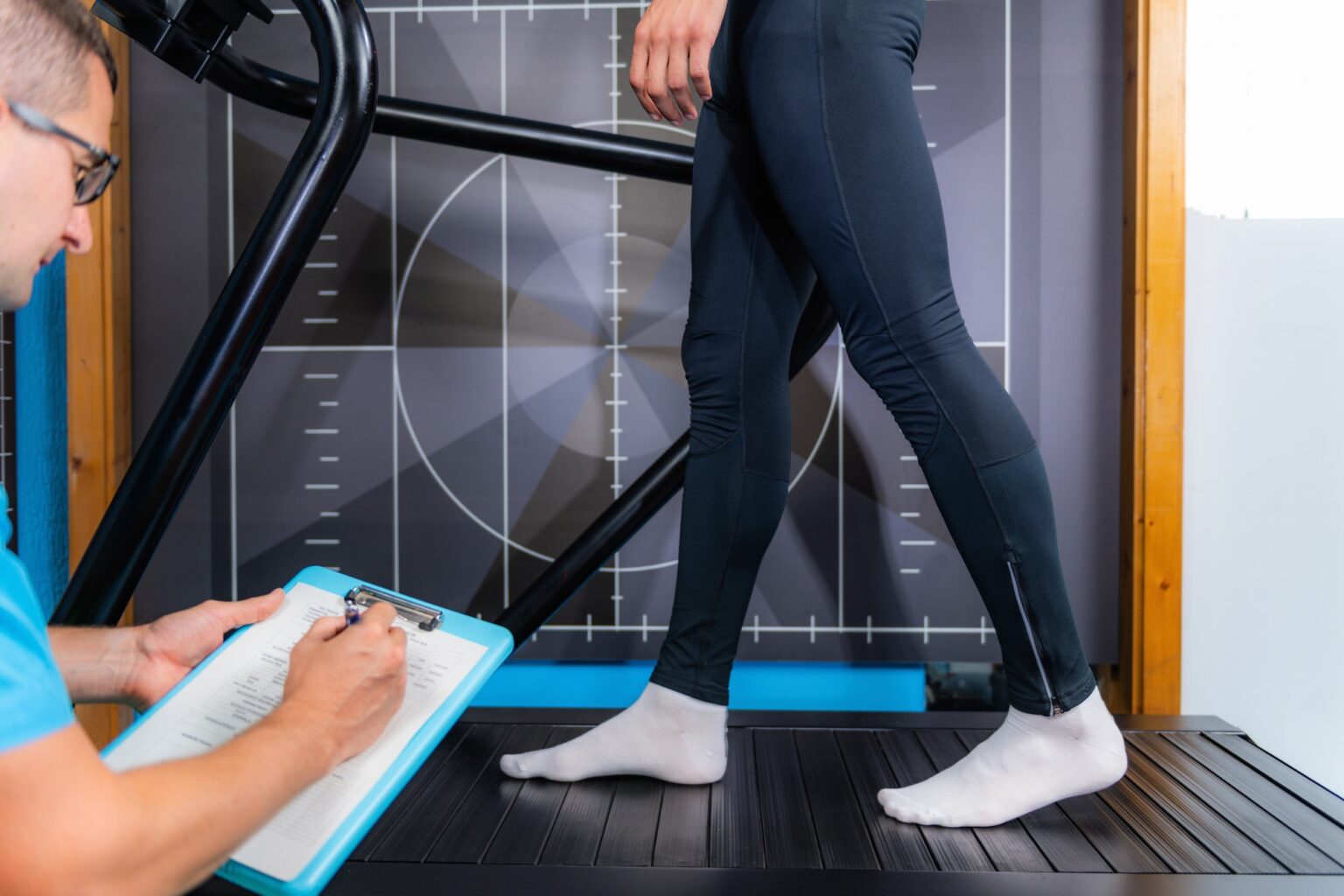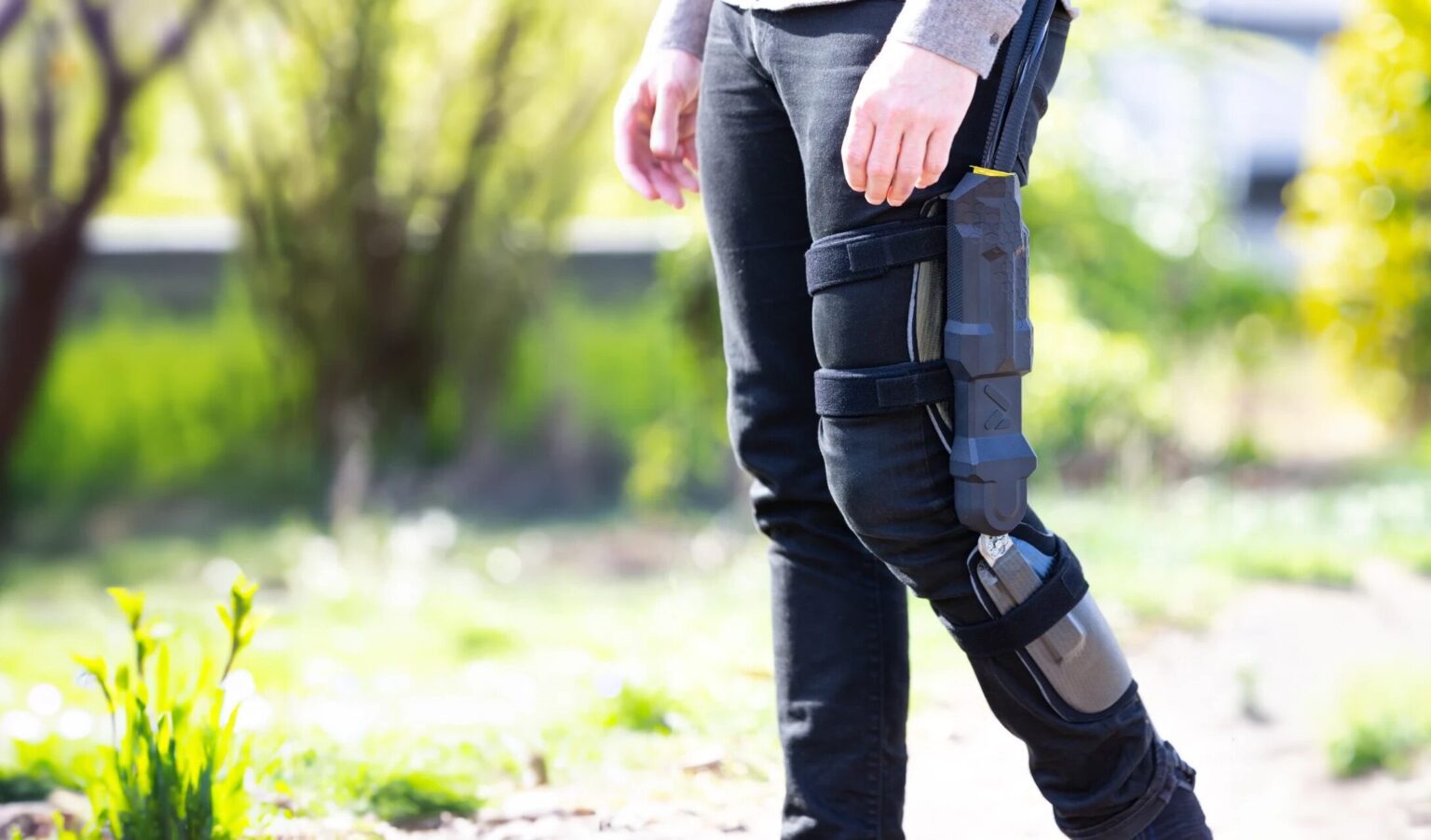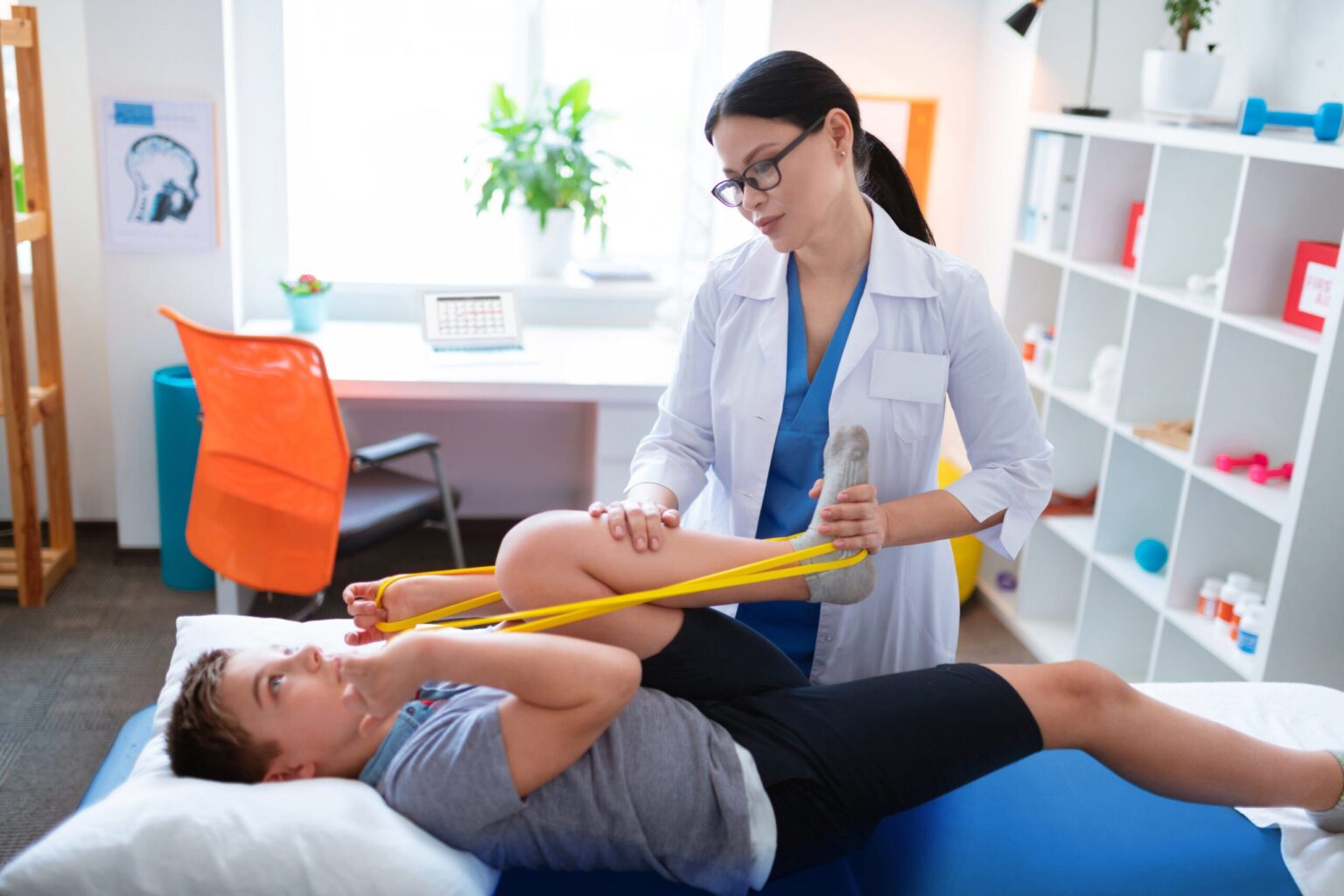It’s a scenario faced by physical therapists every day in the clinic:
- How to help patients understand HOW they are moving so they can make adjustments in their walking patterns.
- How to help patients understand their progress in a way that is meaningful and motivating.
The answer to both of these challenges is incorporating real-time feedback into gait training for neurological conditions.
As a clinician, you know improving gait is a complex process involving muscle activation, motor control, weight shifting, timing, balance, and coordination. And of course, gait training in the context of a neurological condition involves training the body and brain to work together. The best way to build these new neuropathways is repeated practice for muscle activation and target movement patterns. Gait training for neurological conditions is often a slow, non-linear process. Because of this, measuring progress and identifying what strategies are working is challenging.
This is where real-time feedback for gait training sessions makes a big difference. Real-time feedback in gait training for neuro-rehab provides immediate, actionable insights for both patients and therapists. When used effectively, real-time feedback enhances learning, therapy engagement, and functional outcomes for the patient.
Learn how REEV SENSE provides this real-time feedback HERE.
Getting Specific About Real-Time Feedback Tools in Gait Training
In physical therapy, real-time feedback is the immediate delivery of performance data to a patient and therapist during an exercise or session that allows for performance adjustments.
Feedback in the context of motor learning can also be described as movement-related information that is “fed back” to the learner before, during, and after a task to facilitate improvements for the next trial.
Effective gait training relies on feedback to guide movement. This feedback can be intrinsic, arising from the body’s own senses, or extrinsic, coming from an external source. Intrinsic feedback includes sensations such as noticing a loss of balance, feeling how the feet press into the floor, or taking in visual information while moving.
For patients with neurological problems, these internal sensory systems for balance and gait are often impaired. A decrease in limb sensation, sense of balance, or visual processing makes it harder for clients to understand how their body is moving while walking. Extrinsic feedback helps to bridge the gap of missing information for someone working on regaining their walking ability.
Real-time extrinsic feedback can take many forms, from simple visual, auditory, or tactile cues to more high-tech, data-driven tools. You might use a mirror so a patient can see their alignment, a resistance band, IMU sensors, or REEV SENSE spatio-temporal or kinematic analysis. The key is helping your patient to understand their movements in real-time to facilitate improvements.
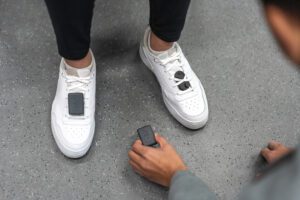
The Advantages of Using Real-Time Feedback in Gait Training
So why does real-time, extrinsic feedback make such a big difference? Let’s break down the physical and psychological benefits of incorporating objective feedback into gait training.
Faster Motor Learning
Immediate feedback allows patients and therapists to work together to recognize and correct errors as they occur. This facilitates motor learning and skill acquisition.
Here’s some of the research:
- Participants who focused externally (on the effects of their movements) rather than internally (on body movements) performed better. This was attributed to the outcome-oriented feedback that helped the motor system to automatically correct and optimize performance. (Wulf 1998, Wulf 2010)
- Real-time visual feedback, particularly knowledge of results, enhances motor learning in stroke patients by enabling immediate error correction, improving balance, and promoting neuroplasticity. (Kwon, 2024)
Increased Confidence and Adherence
Seeing progress in real time is motivating for patients. It helps them trust their own abilities and stay consistent with therapy, especially when rehab feels slow.
Concrete and visible results, such as graphs, numbers, and targets, give patients reassurance that their efforts are making a real difference. This translates to satisfied patients who continue to show up and work hard in the long road to recovery.
Clearer Progress Tracking
Though skilled PTs can see subtle differences and asymmetries in gait, quantifying the changes for payors is challenging.
Real-time feedback captures these nuances, providing both patients and therapists with objective data to track incremental progress, guide adjustments, and celebrate measurable achievements.
Facilitates Personalized Care
Therapists can use real-time feedback to tailor cues and interventions to the patient’s unique needs for sessions that are more targeted, efficient, and responsive to the individual’s strengths and limitations.
Different patients respond best to different types of feedback: some benefit from visual cues, like mirrors or graphs showing their movement, while others respond better to auditory cues, such as verbal instructions or a metronome. For other situations, a client might benefit from tactile cues like manual guidance or the sensation of their foot hitting a cone when they don’t step high enough.
This approach is especially important for patients recovering from neurological conditions. When intrinsic feedback systems such as proprioception, balance responses, or sensory awareness are impaired, extrinsic cues provide the missing information the brain needs to relearn how to move efficiently.
Real-time Feedback Provides a Clear Goal
Working toward a clear goal boosts performance by directing effort where it matters most (Wulf 2016). In gait training, a patient might need targets related to stride length, timing, and speed to build safe and efficient walking skills.
Real-time feedback supports this intent by providing specific targets and confirming whether the patient is achieving them. For example, if the goal is to achieve a specific stride length, the patient can see or feel whether they are meeting that goal. This near-immediate confirmation reinforces correct movement patterns and guides adjustments on the spot.
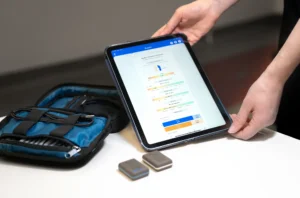
Role of the Therapist: Integrating Meaningful Feedback for Gait Training
Techniques and technology can enhance gait training, but they don’t replace the expertise of a skilled physical therapist.
You have a unique and specialized role in the delivery of real-time feedback:
Effective Cueing: As the one guiding the therapeutic process, it’s up to you to choose the feedback and cues (visual, auditory, tactile, or data) that best support your client’s abilities and goals and guide them toward independent, correct movement..
You’re the one who can read your patient’s response and adjust the type and amount of feedback so they stay challenged without becoming overwhelmed, discouraged, or overconfident.
Observation and Context: As a physical therapist, your observational assessment remains essential, even when using advanced feedback tools. By pairing your clinical observation with objective data, you adjust to the nuances of neurological recovery in a way you couldn’t before.
Interpreting and Applying Data: Your expertise in gait training makes you the best person to interpret and apply the data to the plan of care. You know the reason for progress (or lack of progress) and determine the next steps to help your patient move toward their goals. Additionally, your patient doesn’t know what cadence or stride length numbers actually mean. It’s up to you as the patient’s physical therapist to give meaning to the results, so your patient understands their progress and feels inspired to keep working hard on their path to recovery.
Enhancing Gait Training With Technology for Real-Time Feedback
There’s no doubt that real-time feedback is important in gait training. Both low-tech tools like mirrors and verbal cues, and advanced wearable sensors provide value in the therapeutic process. The key is combining the technology with your expertise as a physical therapist to deliver safe, personalized, and effective sessions.
One high-tech solution designed to support gait rehabilitation in orthopedic and neurologic patients is REEV’s gait analysis technology: SENSE. The compact sensors are engineered to capture detailed real-time gait metrics, including speed, cadence, stride length, balance, and symmetry.
Designed with physical therapists’ needs and schedules in mind, the setup is quick and easy. Simply attach to a client’s shoes or leg (depending on the metrics you want to capture). SENSE accurately records gait metrics, allowing the PT to instantly interpret the data in the connected mobile app. SENSE provides accurate, objective measurements that support therapeutic outcomes and insurance reimbursement. With this technology, the nuanced gait abnormalities you see are quantified so chart reviewers can “see” it as well. (View a sample report here.)
By integrating tools like SENSE into your sessions, you enhance the effectiveness of gait training, provide patients with visible progress, and combine your clinical expertise with cutting-edge technology for optimized rehabilitation outcomes.
Try REEV SENSE, our motion analysis sensors, for free.
The best way to experience the benefits and ease of this technology is in your facility with your patients. We’re committed to demonstrating its efficacy and utility, which is why we’re offering a free trial to physical therapists. Click below to get a quote and request a free trial.
References
Wulf, G., Lewthwaite, R. Optimizing performance through intrinsic motivation and attention for learning: The OPTIMAL theory of motor learning. Psychon Bull Rev 23, 1382–1414 (2016). https://doi.org/10.3758/s13423-015-0999-9
Kwon, I.-H., Shin, W.-S., Choi, K.-S., & Lee, M.-S. (2024). Effects of Real-Time Feedback Methods on Static Balance Training in Stroke Patients: A Randomized Controlled Trial. Healthcare, 12(7), 767. https://doi.org/10.3390/healthcare12070767
Wulf, G., Höß, M., & Prinz, W. (1998). Instructions for Motor Learning: Differential Effects of Internal Versus External Focus of Attention. Journal of Motor Behavior, 30(2), 169–179. https://doi.org/10.1080/00222899809601334
Wulf, G., Chiviacowsky, S., Schiller, E., & Ávila, L. T. (2010a). Frequent external-focus feedback enhances learning. Frontiers in Psychology, 1, 190. doi:10.3389/fpsyg.2010.00190


